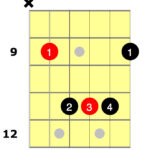In the realm of guitar recording, achieving the perfect tone often involves a blend of creativity and technical know-how. One essential tool that consistently proves its value in this process is the Guitar Di Box, also known as a direct input box or direct box. For guitarists and recording engineers aiming for flexibility and pristine sound quality, incorporating a DI box into their recording setup can be a game-changer.
A DI box serves as an impedance matching and signal balancing device. Guitars, especially electric guitars and basses, output a high-impedance, unbalanced signal. This type of signal is susceptible to noise and signal degradation, particularly over longer cable runs. A DI box converts this high-impedance, unbalanced signal into a low-impedance, balanced signal, making it suitable for direct connection to mixing consoles, audio interfaces, and recording devices.
The strategic advantage of using a guitar DI box lies in its ability to capture a “dry” and unaffected signal directly from your instrument. Imagine you are crafting a guitar track with a chain of effects pedals to achieve a specific sound. While committing to these effects during the initial recording can be tempting, it limits your options in the mixing stage. By routing your guitar signal through a DI box, you can simultaneously send a clean, unprocessed signal to one input of your audio interface and the affected signal from your pedalboard or amplifier to another input.
This dual-signal approach offers unparalleled flexibility. The dry DI signal becomes a sonic blank canvas. You can later experiment with various amp simulators, plugins, and effects within your Digital Audio Workstation (DAW) without being constrained by the initially recorded tone. If you decide that the original effects aren’t quite right for the mix, or if you want to re-amp your guitar signal through a physical amplifier, the dry DI track provides that opportunity.
For bass guitar, the DI box is particularly crucial. Bass frequencies are prone to loss and can benefit significantly from the balanced signal output of a DI box, ensuring a clean and robust low-end capture. Similarly, for synthesizers and other electronic instruments, a DI box can optimize the signal for recording, maintaining clarity and minimizing noise.
In conclusion, the guitar DI box is more than just a connector; it’s a strategic tool for modern guitar recording. By providing a clean, direct signal alongside your effected sound, it empowers you with maximum control and creative possibilities during mixing and post-production, ensuring that your guitar tracks are both sonically rich and adaptable to any musical context.

